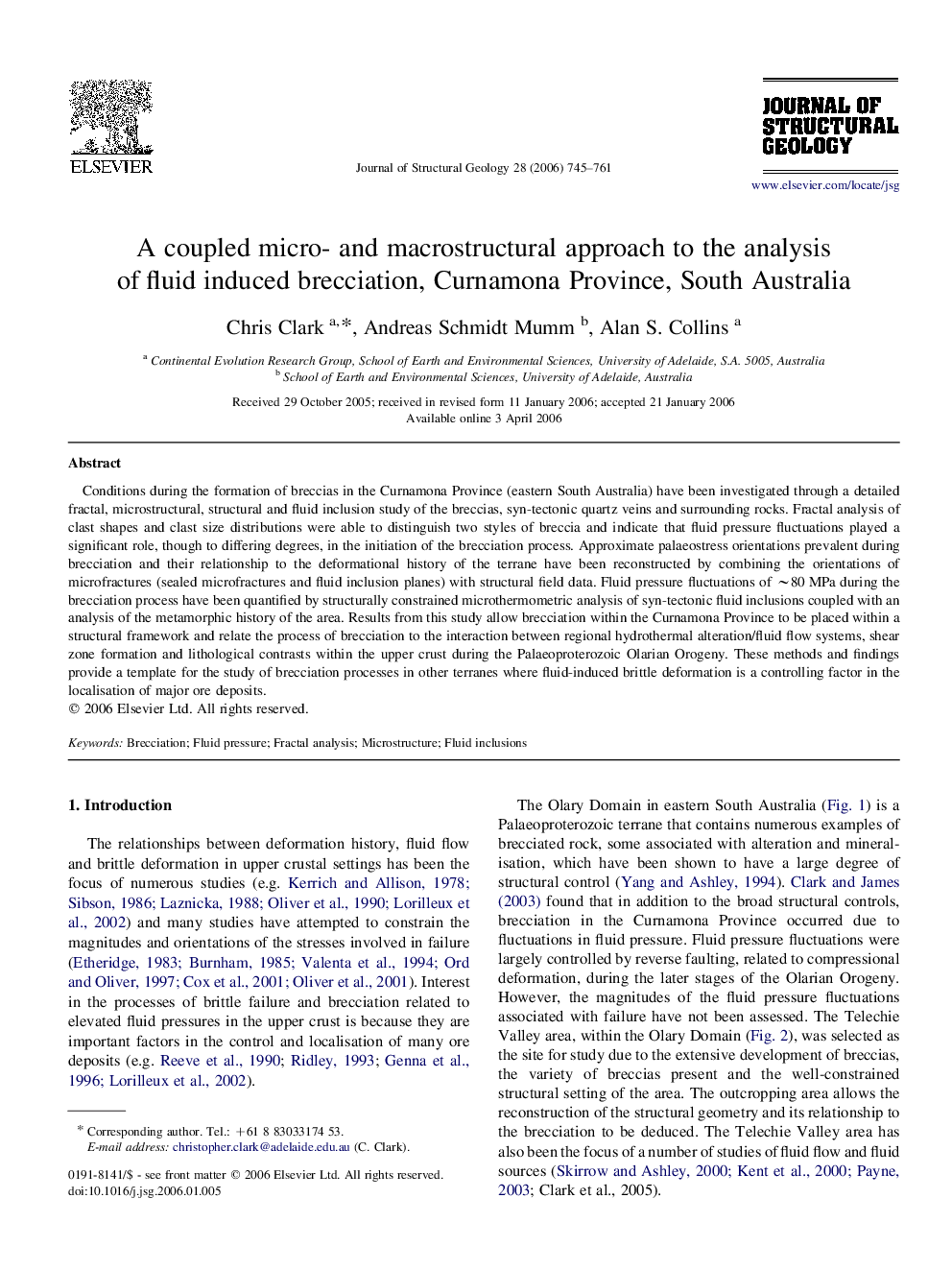| Article ID | Journal | Published Year | Pages | File Type |
|---|---|---|---|---|
| 4734234 | Journal of Structural Geology | 2006 | 17 Pages |
Conditions during the formation of breccias in the Curnamona Province (eastern South Australia) have been investigated through a detailed fractal, microstructural, structural and fluid inclusion study of the breccias, syn-tectonic quartz veins and surrounding rocks. Fractal analysis of clast shapes and clast size distributions were able to distinguish two styles of breccia and indicate that fluid pressure fluctuations played a significant role, though to differing degrees, in the initiation of the brecciation process. Approximate palaeostress orientations prevalent during brecciation and their relationship to the deformational history of the terrane have been reconstructed by combining the orientations of microfractures (sealed microfractures and fluid inclusion planes) with structural field data. Fluid pressure fluctuations of ∼80 MPa during the brecciation process have been quantified by structurally constrained microthermometric analysis of syn-tectonic fluid inclusions coupled with an analysis of the metamorphic history of the area. Results from this study allow brecciation within the Curnamona Province to be placed within a structural framework and relate the process of brecciation to the interaction between regional hydrothermal alteration/fluid flow systems, shear zone formation and lithological contrasts within the upper crust during the Palaeoproterozoic Olarian Orogeny. These methods and findings provide a template for the study of brecciation processes in other terranes where fluid-induced brittle deformation is a controlling factor in the localisation of major ore deposits.
